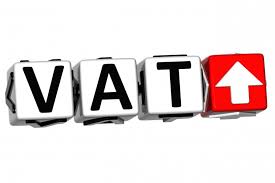VAT which stands for value added tax, is a tax that is placed on the vast majority of goods and services sold within the U.K.
All VAT registered companies are legally obliged to charge their clients and customers VAT and then return collected VAT to HM Revenue & Customs.
VAT is also charged on goods and services imported into the U.K. from other countries. VAT is currently charged at three different rates in the U.K. These are:
- Zero 0% VAT
- Reduced 5% VAT
- Standard 20% VAT
The different rates apply to various products and services, for example:
- Children’s clothes and food 0% VAT rate
- Domestic energy supplies 5% VAT rate
- Most other goods and services 20%VAT rate
There are some services and activities that are completely VAT exempt, which include:
- Services provided by doctors and dentists
- Education and training
- Fundraising events by charities
- Membership subscriptions
The main advantage to companies being VAT registered is that they can then reclaim the VAT they have paid. Non VAT registered businesses are not able to reclaim any VAT under U.K. law
When Should You Register Your Company For VAT?
Legally every company needs to register for VAT if their turnover in a 12 month period goes over what is known as the ‘VAT threshold’. This threshold is currently set at £79,000.
You are able to register for VAT even if you currently have a turnover below the current VAT threshold. If you are unsure about how the VAT registration process works or about your company’s eligibility for VAT you can use the following resource from HMRC to gain further information on this issue.
Once your business is VAT registered you will need to start charging your customers VAT. This enables any of your business customers that are also VAT registered to reclaim the VAT that you have charged them.
Before you send on collected VAT to HMRC, you are first able to claim back the VAT on any products or services that you purchased for your business.
For further information on how VAT affects companies operating in the U.K. please click here to watch the video produced by HMRC.
For more VAT basics you can check out our comprehensive guide in our small business resource.




